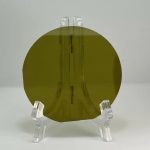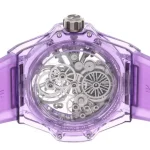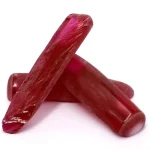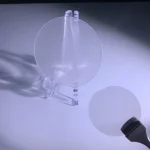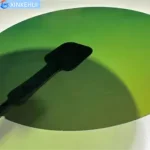Sapphire substrate wafers exhibit unique characteristics that make them highly desirable in various industries. Firstly, they are renowned for their exceptional hardness and scratch resistance. Moreover, their high melting point and thermal conductivity contribute to their suitability in demanding applications.
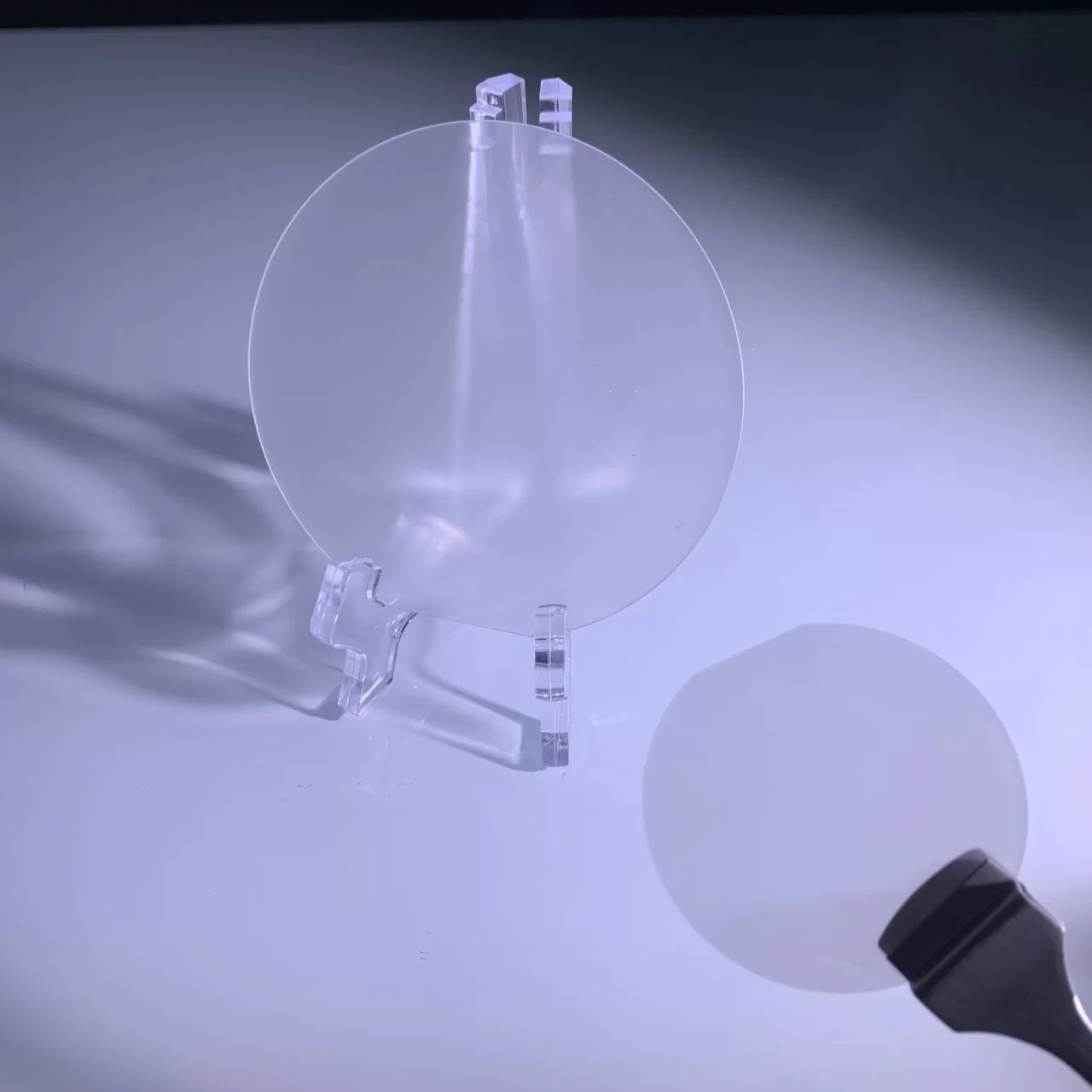
In addition to their mechanical properties, sapphire substrate wafers possess excellent optical transparency across a broad spectrum, from ultraviolet to infrared. This characteristic makes them ideal for optoelectronic devices, such as LEDs and laser diodes. Furthermore, the crystal structure of sapphire ensures uniformity, providing a consistent substrate for electronic and photonic applications.
On the other hand, they are notable for their chemical inertness, rendering them resistant to corrosive environments. This property is advantageous in applications where exposure to harsh chemicals is a concern. Nevertheless, despite their robustness, sapphire substrate wafers are relatively lightweight, contributing to their appeal in aerospace and portable electronic devices.
In contrast to traditional silicon wafers, sapphire substrates offer better electrical insulation. This is a crucial feature in the manufacturing of power electronics, where minimizing electrical losses is paramount. Similarly, sapphire’s high dielectric strength enhances its performance in high-frequency and high-power applications.
Additionally, it exhibit a low coefficient of thermal expansion, reducing the likelihood of cracking or warping under temperature variations. This characteristic is particularly beneficial in situations where thermal stability is essential, such as in semiconductor manufacturing processes.
Meanwhile, the versatility of sapphire as a substrate material is further demonstrated by its compatibility with various deposition techniques. This includes physical vapor deposition (PVD), chemical vapor deposition (CVD), and epitaxial growth methods. Consequently, manufacturers have the flexibility to choose the most suitable technique for their specific applications.
In conclusion, the it’s comprehensive set of characteristics, encompassing mechanical strength, optical transparency, chemical resistance, electrical insulation, and thermal stability, positions it as a material of choice in diverse industries. The seamless integration of these features, coupled with the continuous advancements in fabrication technologies, ensures that sapphire substrate wafers will continue to play a pivotal role in advancing technological innovations across multiple sectors.
Sapphire Substrate/wafer Available Dimensions
| Standard wafer(customzied)2 inch C-plane sapphire wafer SSP/DSP 3 inch C-plane wafer SSP/DSP 4 inch C-plane wafer SSP/DSP 6 inch C-plane wafer SSP/DSP8 inch C-plane wafer SSP/DSP12 inch C-plane wafer SSP/DSP |
Special Cut A-plane (1120) wafer 430um/500um R-plane (1102) wafer 430um/500um M-plane (1010) wafer 430um/500um N-plane (1123) wafer 430um/500um C-axis with a 0.5°~ 4° offcut, toward A-axis or M-axis Other customized orientation |
| Customized Size 10*10mm sapphire wafer 20*20mm sapphire wafer Ultra thin (100um) sapphire wafer 8 inch sapphire wafer |
Patterned Sapphire Substrate (PSS) 2 inch C-plane PSS 4 inch C-plane PSS |
| 2inch wafers in stock | DSP C-AXIS 0.1mm/0.175mm/0.2mm/0.3mm/0.4mm/0.5mm/ 1.0mmtSSP C-axis 0.2/0.43mm(DSP&SSP) A-axis/M-axis/R-axis 0.43mm |
| 3inch in stocks; | DSP/ SSP C-axis 0.43mm/0.5mm |
| 4Inch in stocks | C-planedsp c-axis 0.4mm/ 0.5mm/1.0mmssp c-axis 0.5mm/0.65mm/1.0mmt |
| 6inch wafers in stocks | C-planessp c-axis 1.0mm/1.3mmm dsp c-axis 0.65mm/ 0.8mm/1.0mmt |
| 8 inch sapphire wafers in stock | C-planessp c-axis 1.15mm/1.6mmm DSP c-axis 0.725mm/ 1.6mm/1.8mmt |
| 12inch Wafers in stocks | C-plane DSP c-axis 0.725mm/ 1.5mm/1.0mmt |
Sapphire Substrate/wafer Q&A
Q:Why sapphire is used as substrate?
A:Sapphire substrates. Sapphire (β-Al2O3) is the most popular and extensively used substrate for the growth of III-nitride. It is optically transparent from the visible into deep UV. Similarly It is stable at high temperatures and pre-growth cleaning is well established due to its use in SOI wafer fabrication in Si technology.
Q:What is the chemical composition of the sapphire substrate?
A:Sapphire is a crystalline form of aluminum oxide (Al2O3). It is formed of Al3+ cations and O2- anions arranged in a hexagonal lattice. It is extremely unreactive and chemically-resistant to acids and alkalis, including hydrofluoric acid.
Q:What is sapphire wafer?
Sapphire Wafers. Product Description: Sapphire is a material of a unique combination of physical, chemical and optical properties, which make it resistant to high temperature, thermal shock, water and sand erosion, and scratching. It is a superior window material for many IR applications from 3µm to 5µm.
Sapphire Substrate/wafer Simple Processing Procedure
Sapphire Wafer Production Methods:
In particular they are commonly produced using the following methods:
Kyropoulos Method:
This method involves crystallizing sapphire from a molten alumina source.
A seed crystal is dipped into the molten alumina and slowly pulled upward to form a single crystal.
Heat Exchanger Method:
In fact in this method, a mixture of alumina powder and a seed crystal is placed in a crucible.
The crucible is heated through a heat exchanger, causing the alumina to melt and crystallize onto the seed.
Edge-Defined Film-Fed Growth (EFG) Method:
EFG involves drawing a ribbon of alumina through a heated zone where it crystallizes into a sapphire film.
This method allows for continuous production of them.
Czochralski (CZ) Method:
The CZ method involves melting alumina in a crucible and slowly pulling a seed crystal from the melt.
The pulled crystal is then sliced into wafers.
Liquid Phase Epitaxy (LPE):
Likewise LPE involves the deposition of sapphire onto a substrate from a supersaturated solution.
The product is immersed in the solution, and the sapphire layer grows on its surface.
Plasma-Assisted Reactive Magnetron Sputtering:
This is a thin film deposition technique where it is deposited onto a using plasma and magnetron sputtering.
Wafering:
Meanwhile After the crystal growth, the sapphire ingot is sliced into thin wafers using techniques like diamond wire sawing or laser cutting.
Polishing:
To sum up the sliced wafers undergo a polishing process to achieve the desired surface smoothness and thickness uniformity.
Sapphire Tubes: Crystal Clear Vision Corrosion Resistance in hot demand Sapphire Window for 2025 12 Inch Sapphire Substrate Dia 300mm C Plane Quartz Wafers BF33 xinkehui 全固金晶



